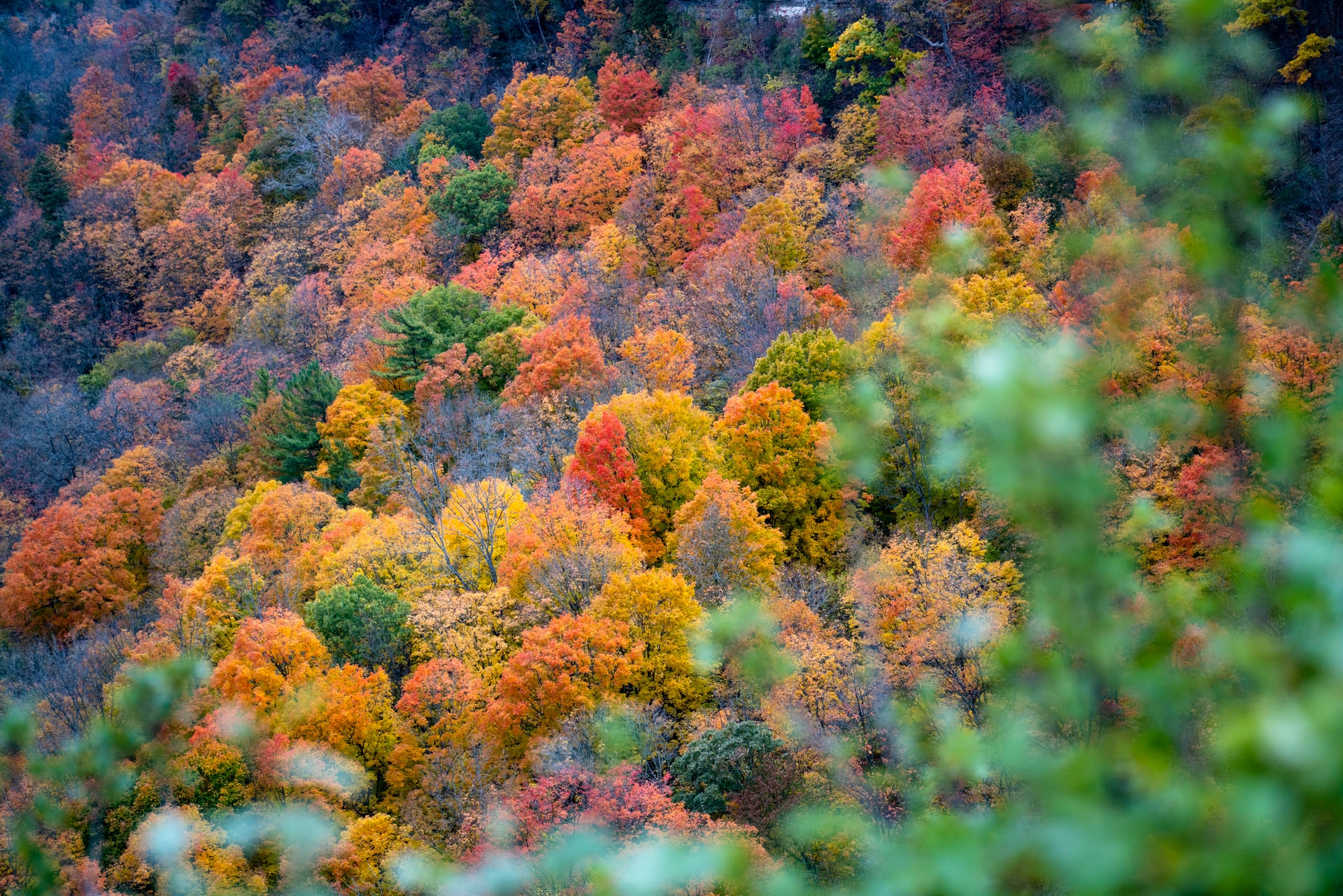
The growing period of hardwood forests in eastern North America has increased by an average of one month over the past century as temperatures have steadily risen, a new study has found.
The study compared present-day observations of the time span from budburst to peak leaf coloration in seven tree species to similar documentation that was collected by an Ohio farmer at the turn of the 20th century.
An analysis of changes in those leaf patterns along with decades of temperature data for northwest Ohio showed a clear connection between increased warming during winter and spring and an extended period of tree growth.
The implications of the longer growing period – both positive and negative – remain unknown. But the simple fact that leaves stay on trees about 15% longer than they did 100 years ago is an “obvious indicator that temperatures are changing and shows that things are not the way they used to be – they are profoundly different,” said lead author Kellen Calinger-Yoak, assistant professor of evolution, ecology and organismal biology at The Ohio State University.
“An entire month of growing season extension is huge when we’re talking about a pretty short period of time for those changes to be expressed,” she said.
Calinger-Yoak completed the research with Peter Curtis, professor emeritus of evolution, ecology and organismal biology at Ohio State. The study was published recently in the journal PLOS ONE.
Wauseon, Ohio, farmer Thomas Mikesell recorded temperatures, precipitation and observations of seasonal changes to trees and other plants from 1883 to 1912 – creating what may be the only comprehensive dataset of pre-warming tree growing patterns in all of North America, Calinger-Yoak said.
For this study, Calinger-Yoak traveled to Wauseon multiples times per week in the spring and fall between 2010 and 2014 to make her own observations of seven species: American elm, black walnut, white oak, black oak, eastern cottonwood, staghorn sumac and sassafras trees, all of which are hardy species that grow well across most of the United States. The researchers also used monthly temperature and precipitation data from the U.S. Historical Climatology Network’s Wauseon station to calculate long-term trends.
Though species did not respond to changing temperatures in exactly the same way – some budded early and most kept their leaf color longer into the fall – Calinger-Yoak said two patterns stood out in the analysis: Average mid-winter and spring temperatures in the region have increased by up to 5 degrees Fahrenheit since 1892, with six of the 10 warmest years in November and December occurring since 1990, and leaves’ longer life spans into autumn indicated when most of the growing season extension took place – because foliage coloration was delayed.
Calinger-Yoak used the dates of peak coloration, rather than when leaves fell to the ground, to determine the end point of the growing season to tie in with each tree’s peak period for photosynthesis. As leaf colors fade, trees become much less efficient at taking in carbon dioxide and water to obtain the sugars that sustain them.
While extended growing likely increases trees’ absorption of carbon dioxide from the atmosphere, the mix of overall warming and extreme temperature fluctuations can stress trees in ways this research couldn’t detect. Overall, though, there was quite a bit of variety in the species’ responses to changing temperatures – which is a red flag for a biologist.
“If you’re exposing organisms to the exact same environmental pressures and you see radically different responses, chances are that one of those responses is going to be better in the long term than the other,” Calinger-Yoak said. “Time will tell who the long-term winners and losers will be, and what that means for how different forests will end up looking if some species are consistently underperforming because they can’t handle the extremes we’ve introduced to the system.”
These findings point to the need for even more species-specific research to improve models designed to predict how forests, and their valuable carbon-absorption service, will respond as the climate continues to change, she said.
“We are invested in making the bad effects of global warming less horrible, and are wondering how much benefit we can get from trees we already have and from potentially planting more trees – that’s really important,” she said. “When we’re thinking about a relatively low-cost mitigation strategy, planting a whole bunch of trees that suck CO2 out of the air is a really good strategy, but to promote those activities you also have to have evidence of the level of benefit you’d derive from it.”

